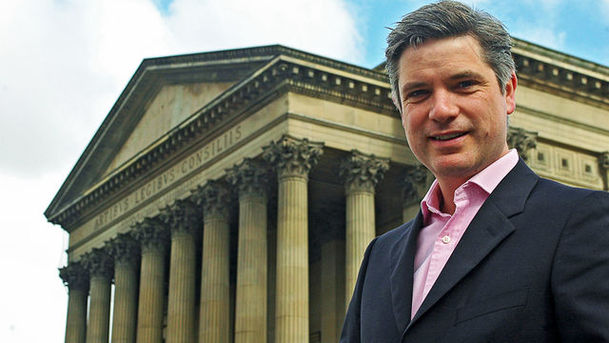People's Palaces: The Golden Age of Civic Architecture - Neo-Classical

Architectural historian Dr Jonathan Foyle explores some of the best Georgian and Victorian neo-classical civic buildings in the north of England. He visits town halls, concert halls, libraries, schools and galleries in Liverpool, Leeds, Bradford, Manchester and Todmorden in an unlikely story of rivalry, ambition and power in the service of social responsibility. The north's public building boom was first funded by the profits of sugar, tobacco, cotton and slavery. Later, the Victorian municipalities in the increasingly powerful industrial and mercantile northern towns competed with one another to build bigger, better, more significant architectural monuments than the neighbouring city. Neo-classicism harked back to Rome, democratic Athens and the Greek city-state. The regular proportion, geometry and symmetry of classical temple-style architecture suggested order in chaotically-expanding urban environments and served to associate towns regarded as squalid and unruly with the cultured ancient civilisations of antiquity. These were buildings constructed with the aim of elevating the towns in which they stood. Featuring contributions from historians Lawrence Westgaph, Steve Binns, Joseph Sharples and Colin Cunningham, Jonathan Foyle visits Bluecoat School in Liverpool, John Woods's Liverpool Town Hall, Liverpool Athenaeum, Thomas Harrison's Liverpool Lyceum and Manchester Portico Library, Charles Barry's Royal Manchester Institution, Manchester Athenaeum, John Foster Jnr's Liverpool Oratory, Harvey Elmes's Liverpool St George's Hall, Lockwood and Mawson's Bradford St George's Hall, Cuthbert Brodrick's Leeds Town Hall, Liverpool's Walker Art Gallery, Cornelius Sherlock's Picton Reading Rooms and, to illustrate that smaller towns also aspired to neo-classical magnificence, Todmorden Town Hall.